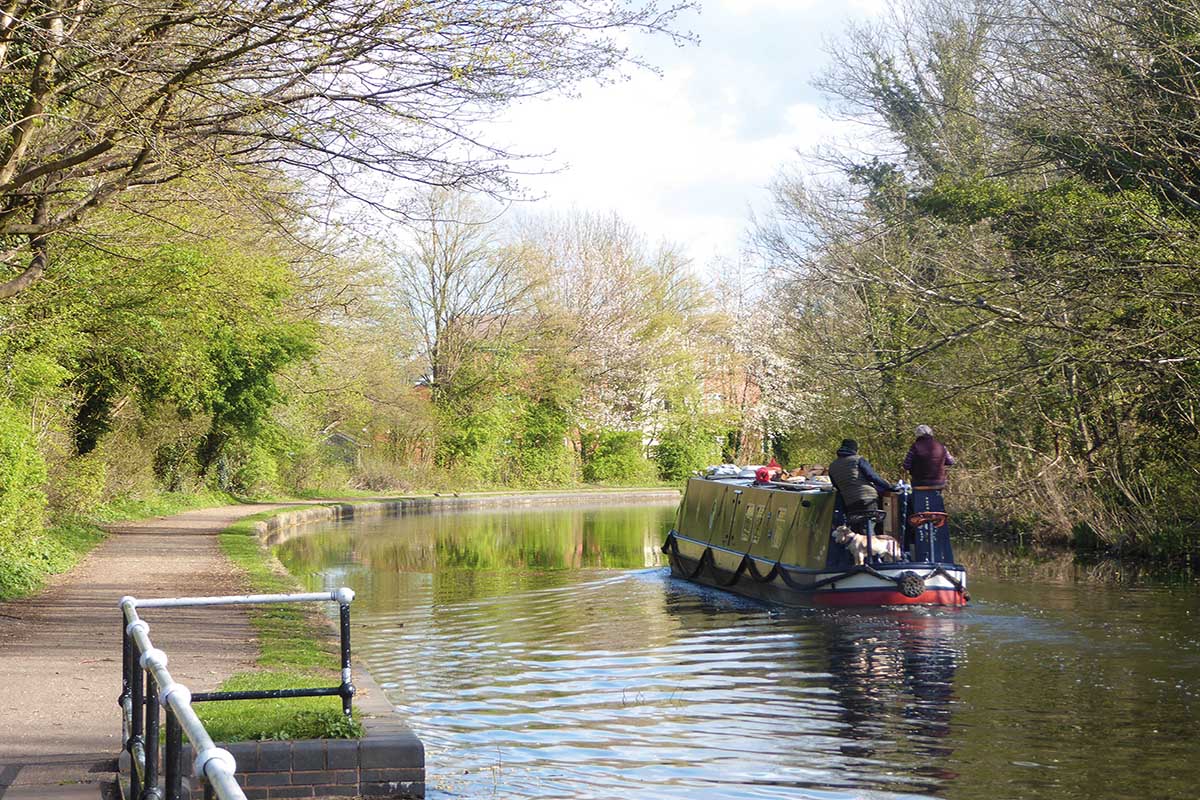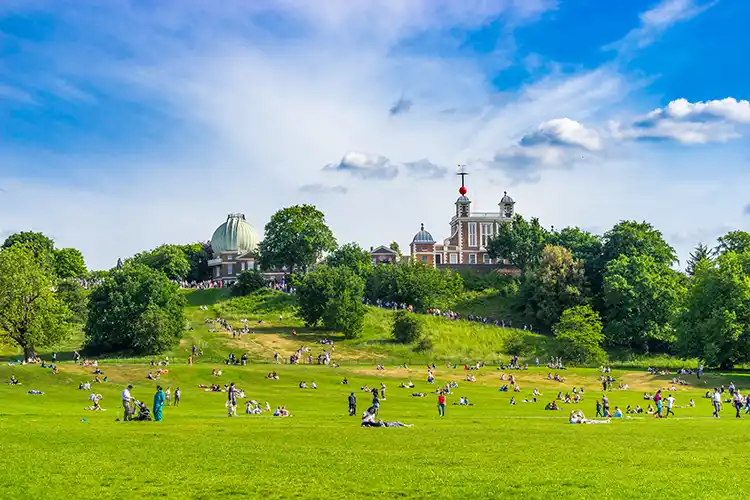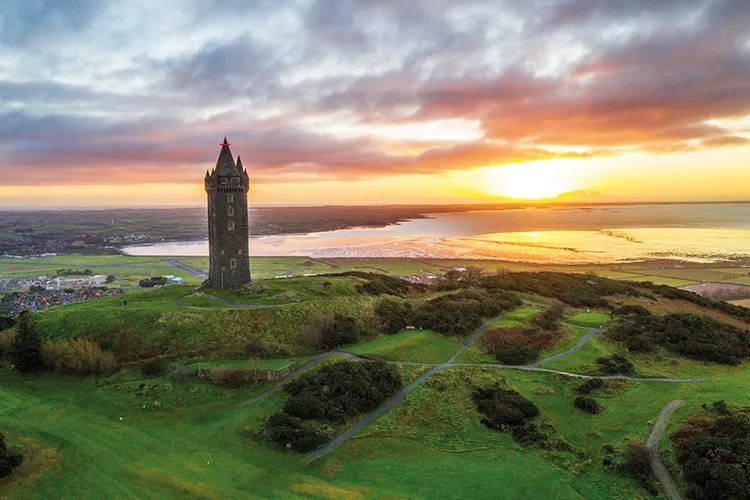
Rory Walsh takes a walk through Stourbridge in the Black Country, which was once a world-renowned centre of glass making
Discovering Britain
Walk • Urban • West Midlands • 1.5 miles • Web guide
August 2013. The Black Country town of Stourbridge basks in summer greenery. Graham Fisher FRGS leads a guided walk following the Town Arm of the canal. At the last stop, the water glistens. Red admiral butterflies the size of our hands sup vivid purple buddleia. They flourish around a ruined building. The former Stuart and Sons works are a sorry sight. Missing doors, broken windows, holes in the roof. The damaged brickwork is scrawled with graffiti. For Fisher though, ‘This isn’t an ending, it’s a beginning’.
A writer and broadcaster, Fisher is also an inland waterways enthusiast. His Stourbridge walk is just a mile and a half long but tells a much bigger tale. Stourbridge was Britain’s heart of glass. In the 19th century Stourbridge glass was as internationally famous as Manchester cotton, Nottingham lace, and the potteries of Stoke-on-Trent. Fisher summarises the industry as ‘one of the greatest amalgamations of talent, expertise and creativity in the history of glass making’.

‘The golden era was from 1850 to 1900,’ he continues. ‘Stourbridge craftsmen were considered the finest in the western world. Their work was renowned for its artistry and innovative new techniques, like cameo and lead crystal. Dignitaries from throughout the British Empire were often presented with a piece of Stourbridge glass when they visited the UK.’ Manufacturers including Webb Corbett, Royal Brierley, and Stuart and Sons were household names. ‘Stuarts’ even made glassware for White Star liners, including the Titanic.
Almost a decade after our first meeting, Fisher and I revisit the walk. Setting off feels like stepping back in time. The route begins on the quiet cobbled lane of Canal Street. Remove the few parked cars and we could be in the early 1800s. To the left, the River Stour trickles beyond a wall. On the right, colourful narrowboats line the end of the canal. Ahead is the restored Bonded Warehouse, built in 1799 for stowing goods such as tea, tobacco and spirits. The canal itself was completed 20 years earlier to carry coal from nearby Dudley.
Like most of Britain’s surviving canals, the Stourbridge Town Arm is used for leisure rather than labour. Boats are homes and holiday vessels instead of working barges. Most of the traffic comprises ducks, geese and coots. Walkers, many with dogs, share the resurfaced towpath with cyclists. Almost everyone smiles or says hello.
Industrial traces remain among this idyll. As the canal ‘cut’ bends right, we step onto an iron bridge. Fisher points to a large building with round windows. The Lion Health medical centre was originally an ironworks foundry. Its current name celebrates the Stourbridge Lion, a steam locomotive built in 1828, the year before Stephenson’s Rocket.
‘The arrival of the canal made a huge difference to Stourbridge,’ Fisher says, ‘and glassmakers were quick to settle along the banks.’ For centuries, the landlocked West Midlands relied upon roads for long-distance trade. Pre-industrial roads were notoriously poor. Canals offered a safe and reliable way to transport heavy raw materials and fragile finished goods alike. Besides this ideal medium, a glass industry developed in Stourbridge for other reasons. As we follow the towpath, Fisher explains.
‘Glass making took hold in Britain from the 1560s. That’s when the government invited glass makers from Lorraine in northern France to revive the industry. These pioneers settled in forests around London and the Sussex Weald, using wood to fuel their furnaces. Concerns about timber supplies, especially for navy shipbuilding, meant that in 1615 King James I banned burning trees for fuel. Glass makers had to find new ways to work. The Black Country offered them everything they needed.’
The Black Country’s geology includes an abundance of sandstone, limestone, coal and clay. ‘These are all useful for making glass: sand and lime for the base mixture, coal for fuel, clay for lining furnaces. Best of all, tectonic movements (around 428 million years ago) raised and folded seams of these materials into easily accessible outcrops.’ Beside the canal, sections of salmon-pink sandstone are exposed above the waterline. Scored with the sloping strata of Jurassic riverbeds, the rock is a reminder of ancient waterways.

Another glimpse of the past appears at the Plowden and Thompson factory, which opened as the New Dial Glassworks. The site includes an unusual round building. ‘It’s a truncated glass cone,’ Fisher explains, ‘a couple of dozen lined the canal.’ Paintings and period photos of them suggest a scene from HG Wells. Glass cones resembled giant upturned funnels, with a large circular base tapering up to a small hole. Their strange shape was practical. ‘They were designed to channel air into the furnace to make the fires burn hotter. They also gave glass makers lots of space.’
Like windmills, glass cones are a unique form of working architecture. Albeit much rarer. There are now just five left in the UK. The walk concludes at the most complete survivor, the Red House Glass Cone. The shortened Plowden and Thompson cone is the only one still used for making glass, in this case, scientific equipment. Before we leave, a machine suddenly fires up inside. Until now the canal’s soundtrack has been birdsong (including the squeaks of a wheeling kestrel) and bees thrumming in blossom.
DISCOVER MORE OF BRITAIN
The factory howl is a fitting moment to ask what happened to Stourbridge glass. ‘The industry slowly declined after the Second World War,’ says Fisher. ‘Principal factors were cheaper competition, lack of investment, and changing customer tastes.’ Stuart and Sons were the last large company to close, in 2001 with the loss of 220 jobs. Mass production gave way to a smaller-scale artisan ‘studio glass’ movement. But that isn’t the end of the story.
In April 2022 on a bright blue morning Fisher shows me the Stuart and Sons site again. The buddleia and butterflies are gone. New windows shimmer in the sun. The building has been repaired and transformed into the Stourbridge Glass Museum. Fisher is a trustee of the British Glass Foundation, a group of volunteers and enthusiasts behind its creation. ‘This Museum has been in the making for over a decade,’ says Fisher. Inside is a collection of Stourbridge glassware spanning four hundred years.
Complementing the thousands of exhibits is a 17th-century glass furnace. During the museum’s opening weekend, it fuels the ‘hot studio’ where visitors watch live glass making demonstrations. Seeing the furnace in action showcases the unique qualities of glass. Glass is everyday, yet enigmatic. It can be practical or ornamental, plain or decorative. It holds water, lets in light, is made in fire after being dug from the earth. Fisher points out that glass is also the only artistic material that can’t be touched while making it.
Across the road from the museum is the historic Red House Glass Cone. The Red House both overlooks and underlines its new neighbour’s place in telling the story of Stourbridge glass. Once again, Fisher’s parting words look forwards: ‘Fanning the embers of history must be accompanied by kindling the flames of the future.’

Go to the Discovering Britain website to find more hikes, short walks, or viewing points. Every landscape has a story to tell!








